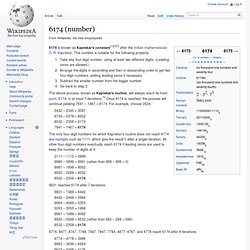Zoom
Trash

Future - The mysterious origins of an uncrackable video game. “You and your team of archaeologists have fallen into the ‘catacombs of the zombies’.”

A miserable situation, to be sure. But this was the chilling trial that faced players of Entombed, an Atari 2600 game, according to the instruction manual. The catacombs were an unforgiving place. A downward-scrolling, two-dimensional maze that players had to navigate expertly in order to evade the “clammy, deadly grip” of their zombie foes. An archaeologist’s nightmare. Released in 1982, Entombed was far from a best-seller and today it’s largely forgotten. You might also like: • The global internet is disintegrating• The forgotten software that inspired our modern world• The weird way machines see the world There was always something intriguing about Entombed, recalls John Aycock at the University of Calgary, in Alberta, Canada.
The pair are among a growing number of “video game archaeologists” who are unearthing long forgotten pieces of software and pulling them apart. Into the labyrinth How? How I Rewired My Brain to Become Fluent in Math - Nautilus - Pocket. I was a wayward kid who grew up on the literary side of life, treating math and science as if they were pustules from the plague.

So it’s a little strange how I’ve ended up now—someone who dances daily with triple integrals, Fourier transforms, and that crown jewel of mathematics, Euler’s equation. It’s hard to believe I’ve flipped from a virtually congenital math-phobe to a professor of engineering. One day, one of my students asked me how I did it—how I changed my brain. I wanted to answer Hell—with lots of difficulty! After all, I’d flunked my way through elementary, middle, and high school math and science. Learning math and then science as an adult gave me passage into the empowering world of engineering.
In the years since I received my doctorate, thousands of students have swept through my classrooms—students who have been reared in elementary school and high school to believe that understanding math through active discussion is the talisman of learning. Why Mathematicians Can’t Find the Hay in a Haystack. The first time I heard a mathematician use the phrase, I was sure he’d misspoken. We were on the phone, talking about the search for shapes with certain properties, and he said, “It’s like looking for hay in a haystack.” “Don’t you mean a needle?”
I almost interjected. Then he said it again. In mathematics, it turns out, conventional modes of thought sometimes get turned on their head. “In many areas of mathematics you’re looking for examples of something, and examples are really abundant, but somehow any time you try to write down an example, you get it wrong,” said Jensen.
The hay-in-a-haystack phenomenon is at work in one of the first objects that kids encounter in mathematics: the number line. Irrational numbers occupy the vast, vast majority of space on a number line — so vast, in fact, that if you were to pick a number on the number line at random, there is literally a 100 percent chance that it will be irrational The hay is hard to find precisely because it’s so unexceptional. The Spellbinding Mathematical GIFs Of Dave Whyte. Area Conversion.url. Visualizing Algorithms. The power of the unaided mind is highly overrated… The real powers come from devising external aids that enhance cognitive abilities.

—Donald Norman Algorithms are a fascinating use case for visualization. To visualize an algorithm, we don’t merely fit data to a chart; there is no primary dataset. Instead there are logical rules that describe behavior. This may be why algorithm visualizations are so unusual, as designers experiment with novel forms to better communicate. But algorithms are also a reminder that visualization is more than a tool for finding patterns in data. #Sampling Before I can explain the first algorithm, I first need to explain the problem it addresses. Light — electromagnetic radiation — the light emanating from this screen, traveling through the air, focused by your lens and projected onto the retina — is a continuous signal.
This reduction process is called sampling, and it is essential to vision. Sampling is made difficult by competing goals. 6174 (number) 6174 is known as Kaprekar's constant[1][2][3] after the Indian mathematician D.

R. Kaprekar. This number is notable for the following property: Take any four-digit number, using at least two different digits. (Leading zeros are allowed.)Arrange the digits in ascending and then in descending order to get two four-digit numbers, adding leading zeros if necessary.Subtract the smaller number from the bigger number.Go back to step 2. 9990 – 0999 = 8991 (rather than 999 – 999 = 0) 9831 reaches 6174 after 7 iterations: 8820 – 0288 = 8532 (rather than 882 – 288 = 594) 8774, 8477, 8747, 7748, 7487, 7847, 7784, 4877, 4787, and 4778 reach 6174 after 4 iterations: